
A Century of Reading: The 10 Books That Defined the 1900s
Part One in a Theoretically Infinite Series
Some books are flashes in the pan, read for entertainment and then left on a bus seat for the next lucky person to pick up and enjoy, forgotten by most after their season has passed. Others stick around, are read and re-read, are taught and discussed: sometimes due to great artistry, sometimes due to luck, and sometimes because they manage to recognize and capture some element of the culture of the time.
In the moment, you often can’t tell which books are which. The Great Gatsby wasn’t a bestseller upon its release, but we now see it as emblematic of a certain American sensibility in the 1920s. Of course, hindsight can also distort the senses; the canon looms and obscures. Still, over the next two and a half weeks, we’ll be publishing a list a day, each one attempting to define a discrete decade, starting with the 1900s (as you’ve no doubt guessed by now) and counting down until we get to the (nearly complete) 2010s.
Though the books on these lists need not be American in origin, I am looking for books that evoke some aspect of American life, actual or intellectual, in each decade—a global lens would require a much longer list. And of course, varied and complex as it is, there’s no list that could truly define American life over ten or any number of years, so I do not make any claim on exhaustiveness. I’ve simply selected books that, if read together, would give a fair picture of the landscape of literary culture for that decade—both as it was and as it is remembered. Finally, two process notes: I’ve limited myself to one book per author over the entire 12-part list, so you may see certain works skipped over in favor of others, even if both are important (for instance, I’ll be ignoring Dubliners so later I can include Ulysses), and in the case of translated work, I’ll be using the date of the English translation, for obvious reasons.
Now, without further ado, let’s begin with ten books that defined the first decade of the 1900s.
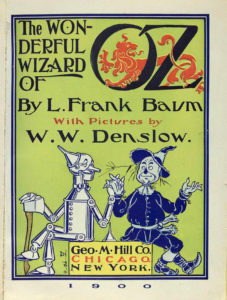 L. Frank Baum, The Wonderful Wizard of Oz (1900)
L. Frank Baum, The Wonderful Wizard of Oz (1900)
I’m sure it’s not necessary to remind anyone of the power or enduring ubiquity of L. Frank Baum’s world. But even at the time of its writing, he knew he was trying to create a new kind of story for the new age he had found himself inhabiting. In the introduction to the book’s first edition, he declared as much, writing:
Folk lore, legends, myths and fairy tales have followed childhood through the ages, for every healthy youngster has a wholesome and instinctive love for stories fantastic, marvelous and manifestly unreal. The winged fairies of Grimm and Andersen have brought more happiness to childish hearts than all other human creations.
Yet the old-time fairy tale, having served for generations, may now be classed as “historical” in the children’s library; for the time has come for a series of newer “wonder tales” in which the stereotyped genie, dwarf and fairy are eliminated, together with all the horrible and blood-curdling incident devised by their authors to point a fearsome moral to each tale. Modern education includes morality; therefore the modern child seeks only entertainment in its wonder-tales and gladly dispenses with all disagreeable incident.
Having this thought in mind, the story of “The Wonderful Wizard of Oz” was written solely to pleasure children of today. It aspires to being a modernized fairy tale, in which the wonderment and joy are retained and the heart-aches and nightmares are left out.
He certainly started a new era of children’s tales—and created something everlasting in the process.
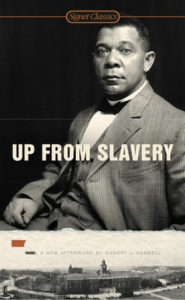 Booker T. Washington, Up From Slavery (1901)
Booker T. Washington, Up From Slavery (1901)
Washington’s autobiography, chronicling his life from a childhood in slavery to an adulthood as an educator, and putting forward a theory for African American uplift and advancement, was a highly influential best-seller in the year of its publication and popular for many years afterwards. It was also controversial, both with contemporary critics and later readers. Some, including W.E.B. Du Bois, criticized parts of the book and Washington’s philosophies, particularly characterizing Washington an accommodationist, while others praised his “realist” approach. Washington “worked too hard to resist and overcome white supremacy to call him an accommodationist,” wrote Robert Norrell, “even if some of his white-supremacist southern neighbors so construed some of his statements.”
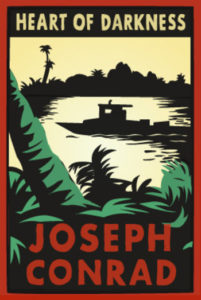 Joseph Conrad, Heart of Darkness (1902)
Joseph Conrad, Heart of Darkness (1902)
Point of order: Conrad’s novella was first published as a three-part serial in Blackwood’s Magazine in 1899, but it wasn’t published in book form until 1902—and even then only as the middle story in Youth: A Narrative and Two Other Stories. Now the story of Marlow’s trip up the Congo River is usually published as a standalone novella, but when it was originally published it got the least attention of the three tales. It didn’t become standard high school and college reading until after Conrad’s lifetime, so while it wasn’t particularly influential in the decade of its publication, it has been extremely so since—especially as a point of academic argument. Chinua Achebe famously called out the book for its racism, and others, including Harold Bloom, have noted its artistic defects. But its influence can’t be denied. “Heart of Darkness has taken on some of the power of myth,” Harold Bloom wrote, “even if the book is limited by its involuntary obscurantism.
It has haunted American literature from T.S. Eliot’s poetry through our major novelists of the era 1920 to 1940, on to a line of movies that go from Citizen Kane of Orson Welles (a substitute for an abandoned Welles project to film Heart of Darkness) on to Coppola’s Apocalypse Now. In this instance, Conrad’s formlessness seems to have worked as an aid, so diffusing his conception as to have made it available to an almost universal audience.
For good or ill, I suppose.
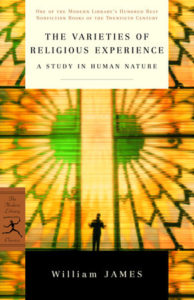 William James, The Varieties of Religious Experience (1902)
William James, The Varieties of Religious Experience (1902)
Originally delivered as a series of lectures at the University of Edinburgh, concerned not with institutional religion but with the psychology of spirituality, and natural theology, and instantly (and currently) a mainstay of the American literary canon, a landmark text that opened the door for further discourse on the subject. But what subject exactly is that? In the introduction to the Penguin Classics edition, Martin E. Marty describes the book as “a classic that is too psychological to have shaped most religious inquiry and too religious to have influenced much psychological research.”
Never mind, say amateurs and experts on both sides of the psychology/religion fence. William James spoke with such passion and eloquence that, precisely because it is a classic, they have kept consulting and even enjoying his book for eight decades.
Professor Walter Houston Clark spoke for many of them when he wrote in the popular magazine Psychology Today that this is “certainly the most notable of all books in the field of the psychology of religion and probably destined to be the most influential book written on religion in the twentieth century.
In fact it’s the duality that makes it so engaging. In an essay on James, Elizabeth Hardwick wrote that “some of the enchantment of The Varieties comes from its being a kind of race with James running on both teams—here he is the cleverest skeptic and there the wildest man in a state of religious enthusiasm.”
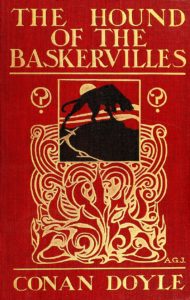 Sir Arthur Conan Doyle, The Hound of the Baskervilles (1902)
Sir Arthur Conan Doyle, The Hound of the Baskervilles (1902)
And . . . he’s back. The Hound of the Baskervilles was Doyle’s third full-length Sherlock Holmes novel, and a widely beloved one at that, but most interesting for our purposes here is that it was the first Sherlock Holmes story since Doyle killed Sherlock Holmes, in 1893’s “The Final Problem.” By 1902, his fans (and, presumably, his bills) had forced him to revitalize him—even if this first salvo was a bit of a dodge, taking place before the Reichenbach Falls incident. Was this an early precursor of Twitter fans bringing back every show on the planet? Maybe.
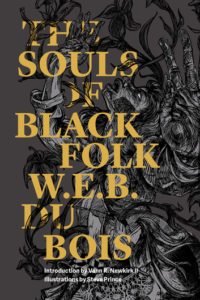 W.E.B. Du Bois, The Souls of Black Folk (1903)
W.E.B. Du Bois, The Souls of Black Folk (1903)
This early standout in the field of sociology is a collection of essays in which historian and civil rights leader Du Bois coins the term “double-consciousness” to refer to the African American’s “sense of always looking at one’s self through the eyes of others, of measuring one’s soul by the tape of a world that looks on in amused contempt and pity.”
One ever feels his two-ness—an American, a Negro; two souls, two thoughts, two unreconciled strivings; two warring ideals in one dark body, whose dogged strength alone keeps it from being torn asunder. . . He simply wishes to make it possible for a man to be both a Negro and an American, without being cursed and spit upon by his fellows, without having the doors of Opportunity closed roughly in his face.
It made quite a splash in cultural, literary, and sociological circles, earning praise from the New York Times and condemnation from places like the Nashville Banner. “Few books make history and fewer still become foundational texts for the movements and struggles of an entire people,” biographer Manning Marable writes in Living Black History.
The Souls of Black Folk occupies this rare position. It helped to create the intellectual argument for the black freedom struggle in the twentieth century. Souls justified the pursuit of higher education for Negroes and thus contributed to the rise of the black middle class. By describing a global color-line, Du Bois anticipated pan-Africanism and colonial revolutions in the Third World. Moreover, this stunning critique of how “race” is lived through the normal aspects of daily life is central to what would become known as “whiteness studies” a century later.
You’d think we would have learned to fix more of this by now.
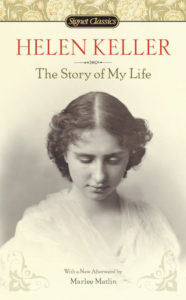 Helen Keller, The Story of My Life (1903)
Helen Keller, The Story of My Life (1903)
When I was a child, teachers used Helen Keller as a cudgel—if she can learn to read and write, you can too. Which, fair enough. Then again, not all of us were considered “the greatest woman of our age” by Winston Churchill nor “fellow to Caesar, Alexander, Napoleon, Homer, Shakespeare, and the rest of the immortals” by Mark Twain, so it’s as it should be that Keller’s autobiography has become an inspirational and widely popular classic of American literature.
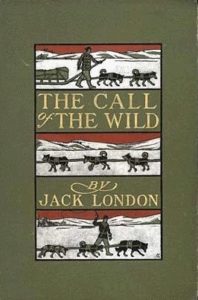 Jack London, The Call of the Wild (1903)
Jack London, The Call of the Wild (1903)
London’s classic adventure novel is based on his own experiences in the Yukon during the Klondike Gold Rush—though one has to assume that the book is a little different, considering the main character is a dog. It was an instant bestseller, and widely acclaimed by critics, and also got London involved in a huge literary controversy.
Around the time that London was working, there was a surge in popular nature writing, marked by a divide: those who anthropomorphized the animals and the natural world, and those who preferred a strict realist approach. Naturalist John Burroughs led the charge, and later, President Roosevelt picked it up, writing an essay decrying “nature fakers” like London, who were tricking the populace with unbelievable stories about the wild.
London responded that in fact The Call of the Wild and White Fang were in fact
a protest against the “humanizing” of animals, of which it seemed to me several “animal writers” had been profoundly guilty. Time and again, and many times, in my narratives, I wrote, speaking of my dog-heroes: “He did not think these things; he merely did them,” etc. And I did this repeatedly, to the clogging of my narrative and in violation of my artistic canons; and I did it in order to hammer into the average human understanding that these dog-heroes of mine were not directed by abstract reasoning, but by instinct, sensation, and emotion, and by simple reasoning. Also, I endeavored to make my stories in line with the facts of evolution; I hewed them to the mark set by scientific research, and awoke, one day, to find myself bundled neck and crop into the camp of the nature-fakers.
President Roosevelt was responsible for this, and he tried and condemned me on two counts. (1) I was guilty of having a big, fighting bull-dog whip a wolf-dog. (2) I was guilty of allowing a lynx to kill a wolf-dog in a pitched battle. Regarding the second count, President Roosevelt was wrong in his field observations taken while reading my book. He must have read it hastily, for in my story I had the wolf-dog kill the lynx. Not only did I have my wolf-dog kill the lynx, but I made him eat the body of the lynx as well. Remains only the first count on which to convict me of nature-faking, and the first count does not charge me with diverging from ascertained facts. It is merely a statement of a difference of opinion. President Roosevelt does not think a bulldog can lick a-wolf-dog. I think a bull-dog can lick a wolf-dog. And there we are. Difference of opinion may make, and does make, horse-racing. I can understand that difference of opinion can make dog-fighting. But what gets me is how difference of opinion regarding the relative fighting merits of a bull-dog and a wolf-dog makes me a nature-faker and President Roosevelt a vindicated and triumphant scientist.
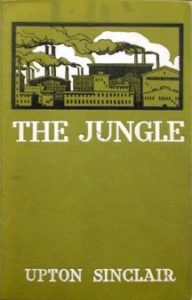 Upton Sinclair, The Jungle (1904 serial, 1906 single volume)
Upton Sinclair, The Jungle (1904 serial, 1906 single volume)
It’s the rare novel that actually changes the laws of the land—but this one did. The Jungle concerns the life of a typical American factory worker—in this case a Lithuanian immigrant—in Chicago in the early 1900s. Suffice it to say, things are bleak. The public noticed the stories of degradation, corruption, and workers falling into tanks and getting ground up into their lunch meat. They were not pleased. While Sinclair meant his novel to be an exposé of the horrific conditions for and exploitation of the American factory worker, and a call to socialism as the only solution, that wasn’t the general takeaway. “I realized with bitterness that I had been made a ‘celebrity,'” he remarked, “not because the public cared anything about the workers, but simply because the public did not want to eat tubercular beef.” Public pressure and an internal report led President Theodore Roosevelt’s Congress to pass the Federal Meat Inspection Act and the Pure Food and Drug Act in 1906, and to the establishment of what we now call the Food and Drug Administration. So the novel didn’t achieve its goals of American socialism, but it did change the food industry enormously, and probably saved a lot of lives in the process.
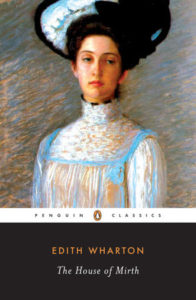 Edith Wharton, The House of Mirth (1905)
Edith Wharton, The House of Mirth (1905)
Wharton’s second novel, a dazzling and depressing story of a young woman—with class but no fortune, and nearing the end of her marriageable years—attempting to navigate New York’s high society at the fading edge of the Gilded Age. This world of old money and genteel society was one that Wharton knew well, but that was rapidly evaporating. “In what aspect could a society of irresponsible pleasure-seekers be said to have, on the ‘old woe of the world,’ any deeper bearing that the people composing such a society could guess?” she wrote of her conception of the novel in her autobiography A Backward Glance. “The answer was that a frivolous society can acquire dramatic significance only through what its frivolity destroys.”
The novel was an instant critical and commercial success when it was published, with 140,000 copies in print before the end of the year (after a first run of 40,000, in October). William Brownell, Wharton’s editor at Scribner’s, wrote to her calling it “the most rapid sale of any book ever published by Scribner.”
See also: Henry Adams, The Education of Henry Adams (1907), Anton Chekhov, Three Sisters (1901), G.K. Chesterton, The Man Who Was Thursday (1908), Joseph Conrad, Lord Jim (1900), Theodore Dreiser, Sister Carrie (1900), E. M. Forster, A Room With a View (1908), Rudyard Kipling, Kim (1901), Baroness Orczy, The Scarlet Pimpernel (1905), Beatrix Potter, The Tale of Peter Rabbit (1901), etc.
![]()
STAYED TUNED TOMORROW, WHEN WE TAKE THIS CRAZY PARTY TO THE 1910s
Emily Temple
Emily Temple is the managing editor at Lit Hub. Her first novel, The Lightness, was published by William Morrow/HarperCollins in June 2020. You can buy it here.



















